PPNet: A Precipitation Nowcasting Model Based on Pre-Prediction
-
摘要: 降雨短时预测一直以来都是气象预测问题中的热点问题。传统的预测方法基于数值天气预测模型展开预报,但近些年利用深度学习展开基于雷达回波图的降雨短时预测方法受到了广大研究者的关注。其中,时序预测网络存在不能并行计算导致耗时过长的问题且存在梯度爆炸问题。全卷积网络可以解决上述两个问题,但是却不具备时序信息提取的能力。因此,该文以泰勒冻结假设为理论依据,提出一个基于预先预测辅助推断结构的2维全卷积网络(PPNet)。网络先行提取粗粒度时序信息与空间信息,然后利用全卷积结构细化特征粒度,有效缓解2维卷积网络不能提取时序信息的缺陷。此外,该文还提供一种时序特征约束器对预先预测特征进行时间维度的特征约束,使预测特征更倾向于真实特征。消融实验证明所提预先预测辅助推断结构和时序特征约束器具有优秀的时序特征能力,可以提升网络对时序信息的敏感度。与目前最好的降雨预测算法或视频预测算法相比,该文网络均取得较好结果,特别在暴雨指标上达到最优。Abstract: Precipitation nowcasting has always been a hot research topic in weather forecasting. Traditional forecasting methods are based on numerical weather prediction. But recently the radar extrapolation-based methods using deep learning have attracted many researchers' attentions. Among them, the temporal prediction network cannot be calculated in parallel, which causes it to take too long time and has the problem of gradient explosion. The fully convolutional networks can solve the above two problems, but it does not have the ability to extract temporal information. Therefore, based on Taylor frozen hypothesis, a 2D fully convolutional Pre-predicted Precipitation nowcasting Network (PPNet) with a pre-prediction auxiliary inference structure is proposed. The network firstly extracts coarse-grained temporal and spatial information, and then uses the fully convolution structure to refine the feature granularity thereby effectively remitting the drawback that 2-D convolutional networks cannot extract temporal information. In addition, the paper provides a temporal features constraint structure to constrain the pre-predicted features and the structure makes the extracted features more realistic. The ablation experiments prove that the proposed pre-prediction auxiliary inference structure and temporal features constraint structure have excellent ability to extract temporal features and improve the sensitivity of the network to temporal features. Compared with the current best rainfall prediction algorithms and video prediction algorithms, the paper's network achieves better prediction results, especially in the rainstorm area.
-
算法1 预先预测算法 输入:$ {{\boldsymbol{x}}}_{n-2},{{\boldsymbol{x}}}_{n-1},{{\boldsymbol{x}}}_{n} $ 输出:12预测序列帧 1: function getTransXY(res1, res2) 2: res2 ← pad(res2, (100, 100)) 3: min_mse ← 1e10 4: min_x ← 0, min_y ← 0 5: for x = –15 → 15 do 6: for y = –15 $ \to $ 15 do 7: res2_x $ \leftarrow $ 100 + x 8: res2_y $ \leftarrow $ 100 + y 9: tmp_res2 $ \leftarrow $ crop(res2, res2_x, res2_y, 288) 10: tmp_mse $ \leftarrow $ sum(abs(res1 - tmp_res2)) 11: if tmp_mse < min_mse do 12: min_mse $ \leftarrow $ tmp_mse 13: min_x $ \leftarrow $ x 14: min_y $ \leftarrow $ y 15: end if 16: end for 17: end for 18: return -min_x, -min_y 19: 20: function prePrediction$ ({{\boldsymbol{x}}}_{n-2},{{\boldsymbol{x}}}_{n-1},{{\boldsymbol{x}}}_{n}) $ 21: res1 $ \leftarrow $ $ {{\boldsymbol{x}}}_{n-1}-{{\boldsymbol{x}}}_{n-2} $ 22: res2 $ \leftarrow $ $ {{\boldsymbol{x}}}_{n}-{{\boldsymbol{x}}}_{n-1} $ 23: trans_x, trans_y = getTransXY(res1, res2) 24: pred $ \leftarrow $ list 25: z $ {{\boldsymbol{x}}_n} $ , res $ \leftarrow $ res2 26: for i = 0 $ \to $ 12 do: 27: res = crop (pad(res, (30, 30) ), 30+trans_x,
30+trans_y)28: $ {\boldsymbol{z}} $ = $ {\boldsymbol{z}} $ + res 29: $ {\boldsymbol{z}} $ = gaussian($ {\boldsymbol{z}} $) 30: pred.append($ {\boldsymbol{z}} $) 31: end for 32: pred = stack(pred) 33: return pred 表 1 降雨强度分布统计降雨强度
降雨强度(mm/h) 占比(%) 降雨等级 0 ≤ r < 0.5 63.7534 无雨 0.5 ≤ r < 2 25.6244 小雨 2 ≤ r < 5 8.7806 小雨到中雨 5 ≤ r < 10 1.5652 中雨 10 ≤ r 0.2764 大雨及以上 表 2 与其他方法实验结果比较
方法 CSI/帧 HSS/帧 B-MSE B-MAE $ {r}\ge 0.5 $ $ {r}\ge 2 $ $ {r}\ge 5 $ $ {r}\ge 10 $ $ {r}\ge 0.5 $ $ {r}\ge 2 $ $ {r}\ge 5 $ $ {r}\ge 10 $ ConvLSTM 0.6120 0.2929 0.0799 0.0150 0.2998 0.1800 0.0564 0.0120 22.0558 1.4128 PredRNN 0.6063 0.2831 0.0767 0.0104 0.3045 0.1758 0.0550 0.0086 22.8957 1.4245 PredRNN++ 0.6065 0.2885 0.0788 0.0124 0.3053 0.1799 0.0566 0.0100 22.4743 1.4083 PFST 0.6111 0.2904 0.0838 0.0150 0.3021 0.1788 0.0591 0.0121 21.5806 1.4007 MIM 0.5956 0.2433 0.0394 0.0017 0.2980 0.1525 0.0292 0.0015 24.8424 1.5020 本文PPNet (N+PPAI+TFC) 0.6219 0.3193 0.1065 0.0301 0.3119 0.1963 0.0741 0.0225 19.4351 1.3319 N+PPAI 0.6071 0.3101 0.1027 0.0317 0.3106 0.1950 0.0732 0.0228 19.4974 1.3498 N 0.6118 0.3107 0.0985 0.0224 0.3070 0.1902 0.0681 0.0168 20.7112 1.3525 -
[1] WANG Cunguang and HONG Yang. Application of spatiotemporal predictive learning in precipitation nowcasting[C]. AGU Fall Meeting Abstracts, Washington, USA, 2018: H31H–1988. [2] SUN Juanzhen, XUE Ming, WILSON J W, et al. Use of NWP for nowcasting convective precipitation: Recent progress and challenges[J]. Bulletin of the American Meteorological Society, 2014, 95(3): 409–426. doi: 10.1175/BAMS-D-11-00263.1. [3] WOO W C and WONG W K. Operational application of optical flow techniques to radar-based rainfall nowcasting[J]. Atmosphere, 2017, 8(3): 48. doi: 10.3390/atmos8030048. [4] WOO W C and WONG W K. Application of optical flow techniques to rainfall nowcasting[C]. The 27th Conference on Severe Local Storms, Madison, USA, 2014. [5] SHI Xingjian, CHEN Zhourong, WANG Hao, et al. Convolutional LSTM network: A machine learning approach for precipitation nowcasting[C]. The 28th International Conference on Neural Information Processing Systems, Montreal, Canada, 2015. doi: 10.1007/978-3-319-21233-3_6. [6] VAN HOUDT G, MOSQUERA C, and NÁPOLES G. A review on the long short-term memory model[J]. Artificial Intelligence Review, 2020, 53(8): 5929–5955. doi: 10.1007/s10462-020-09838-1. [7] HOCHREITER S and SCHMIDHUBER J. Long short-term memory[J]. Neural Computation, 1997, 9(8): 1735–1780. doi: 10.1162/neco.1997.9.8.1735. [8] RAJ N, GHARINEIAT Z, AHMED A A M, et al. Assessment and prediction of sea level trend in the South Pacific Region[J]. Remote Sensing, 2022, 14(4): 986. doi: 10.3390/rs14040986. [9] AHMAD R, YANG B, ETTLIN G, et al. A machine‐learning based ConvLSTM architecture for NDVI forecasting[J]. International Transactions in Operational Research, 2023, 30(4): 2025–2048. doi: 10.1111/itor.12887. [10] WANG Yunbo, GAO Zhifeng, LONG Mingsheng, et al. PredRNN++: Towards a resolution of the deep-in-time dilemma in spatiotemporal predictive learning[C]. The 35th International Conference on Machine Learning, Stockholm, Sweden, 2018: 5110–5119. doi: 10.48550/arXiv.1804.06300. [11] KATTENBORN T, LEITLOFF J, SCHIEFER F, et al. Review on Convolutional Neural Networks (CNN) in vegetation remote sensing[J]. ISPRS Journal of Photogrammetry and Remote Sensing, 2021, 173: 24–49. doi: 10.1016/j.isprsjprs.2020.12.010. [12] RONNEBERGER O, FISCHER P, and BROX T. U-Net: Convolutional networks for biomedical image segmentation[C]. The 18th International Conference on Medical Image Computing and Computer-Assisted Intervention, Munich, German, 2015: 234–241. doi: 10.1007/978-3-319-24574-4_28. [13] 李原, 李燕君, 刘进超, 等. 基于改进Res-UNet网络的钢铁表面缺陷图像分割研究[J]. 电子与信息学报, 2022, 44(5): 1513–1520. doi: 10.11999/JEIT211350.LI Yuan, LI Yanjun, LIU Jinchao, et al. Research on segmentation of steel surface defect images based on improved res-UNet network[J]. Journal of Electronics & Information Technology, 2022, 44(5): 1513–1520. doi: 10.11999/JEIT211350. [14] AYZEL G, SCHEFFER T, and HEISTERMANN M. RainNet v1.0: A convolutional neural network for radar-based precipitation nowcasting[J]. Geoscientific Model Development, 2020, 13(6): 2631–2644. doi: 10.5194/gmd-13-2631-2020. [15] TAYLOR G I. The spectrum of turbulence[J]. Proceedings of the Royal Society A: Mathematical, Physical and Engineering Sciences, 1938, 164(919): 476–490. doi: 10.1098/rspa.1938.0032. [16] RUMELHART D E, HINTON G E, and WILLIAMS R J. Learning representations by back-propagating errors[J]. Nature, 1986, 323(6088): 533–536. doi: 10.1038/323533a0. [17] WANG Yunbo, LONG Mingsheng, WANG Jianmin, et al. PredRNN: Recurrent neural networks for predictive learning using spatiotemporal LSTMs[C]. The 31st International Conference on Neural Information Processing Systems, Long Beach, USA, 2017: 879–888. [18] WANG Yunbo, ZHANG Jianjin, ZHU Hongyu, et al. Memory in memory: A predictive neural network for learning higher-order non-stationarity from spatiotemporal dynamics[C]. The 2019 IEEE/CVF Conference on Computer Vision and Pattern Recognition, Long Beach, USA, 2019: 9146–9154. doi: 10.1109/CVPR.2019.00937. [19] 王同, 苏林, 任群言, 等. 基于注意力机制的全海深声速剖面预测方法[J]. 电子与信息学报, 2022, 44(2): 726–736. doi: 10.11999/JEIT210078.WANG Tong, SU Lin, REN Qunyan, et al. Full-sea depth sound speed profiles prediction using RNN and attention mechanism[J]. Journal of Electronics & Information Technology, 2022, 44(2): 726–736. doi: 10.11999/JEIT210078. [20] SUN Feng, BAI Cong, SONG Yi, et al. MMINR: Multi-frame-to-multi-frame inference with noise resistance for precipitation nowcasting with radar[C]. 2022 26th International Conference on Pattern Recognition, Montreal, Canada, 2022: 97–103. doi: 10.1109/ICPR56361.2022.9956046. [21] HAN Lei, SUN Juanzhen, and ZHANG Wei. Convolutional neural network for convective storm nowcasting using 3-D Doppler weather radar data[J]. IEEE Transactions on Geoscience and Remote Sensing, 2020, 58(2): 1487–1495. doi: 10.1109/ TGRS.2019.2948070. [22] TREBING K, STAǸCZYK T, and MEHRKANOON S. SmaAt-UNet: Precipitation nowcasting using a small attention-UNet architecture[J]. Pattern Recognition Letters, 2021, 145: 178–186. doi: 10.1016/j.patrec.2021.01.036. [23] ZHANG Lei, HUANG Zhenyue, LIU Wei, et al. Weather radar echo prediction method based on convolution neural network and long short-term memory networks for sustainable e-agriculture[J]. Journal of Cleaner Production, 2021, 298: 126776. doi: 10.1016/j.jclepro.2021.126776. [24] SHI Xingjian, GAO Zhihan, LAUSEN L, et al. Deep learning for precipitation nowcasting: A benchmark and a new model[C]. The 31st International Conference on Neural Information Processing Systems, Long Beach, USA, 2017. -





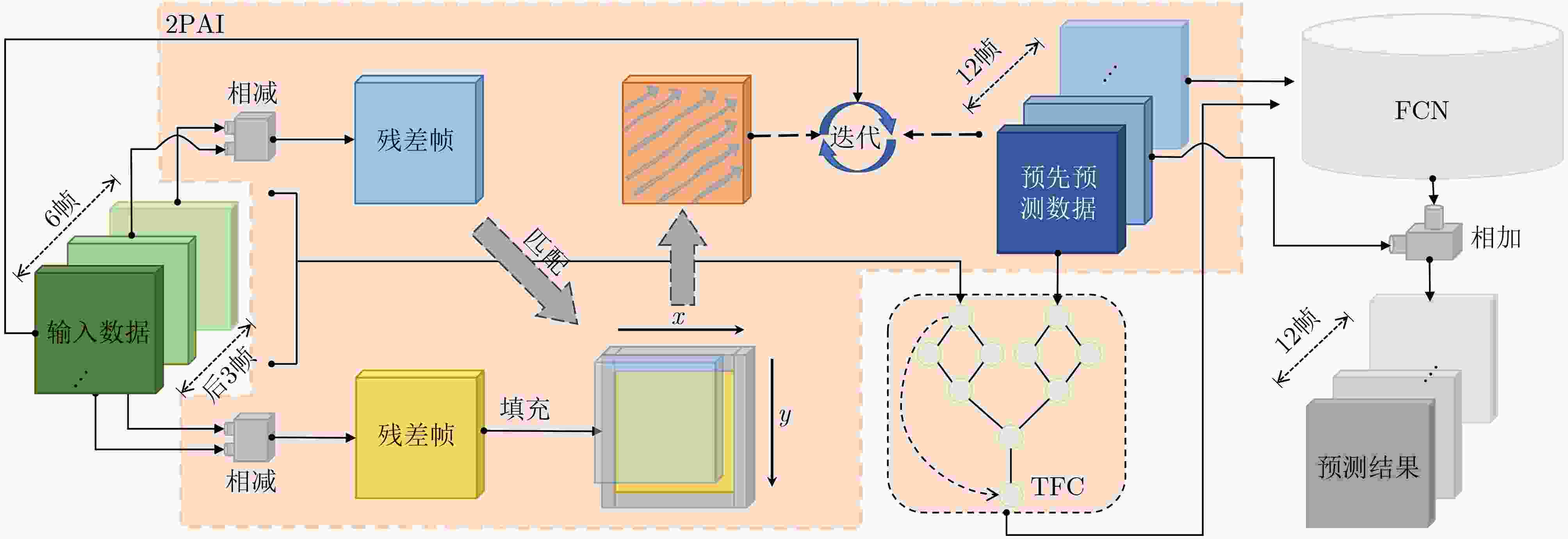
 下载:
下载:
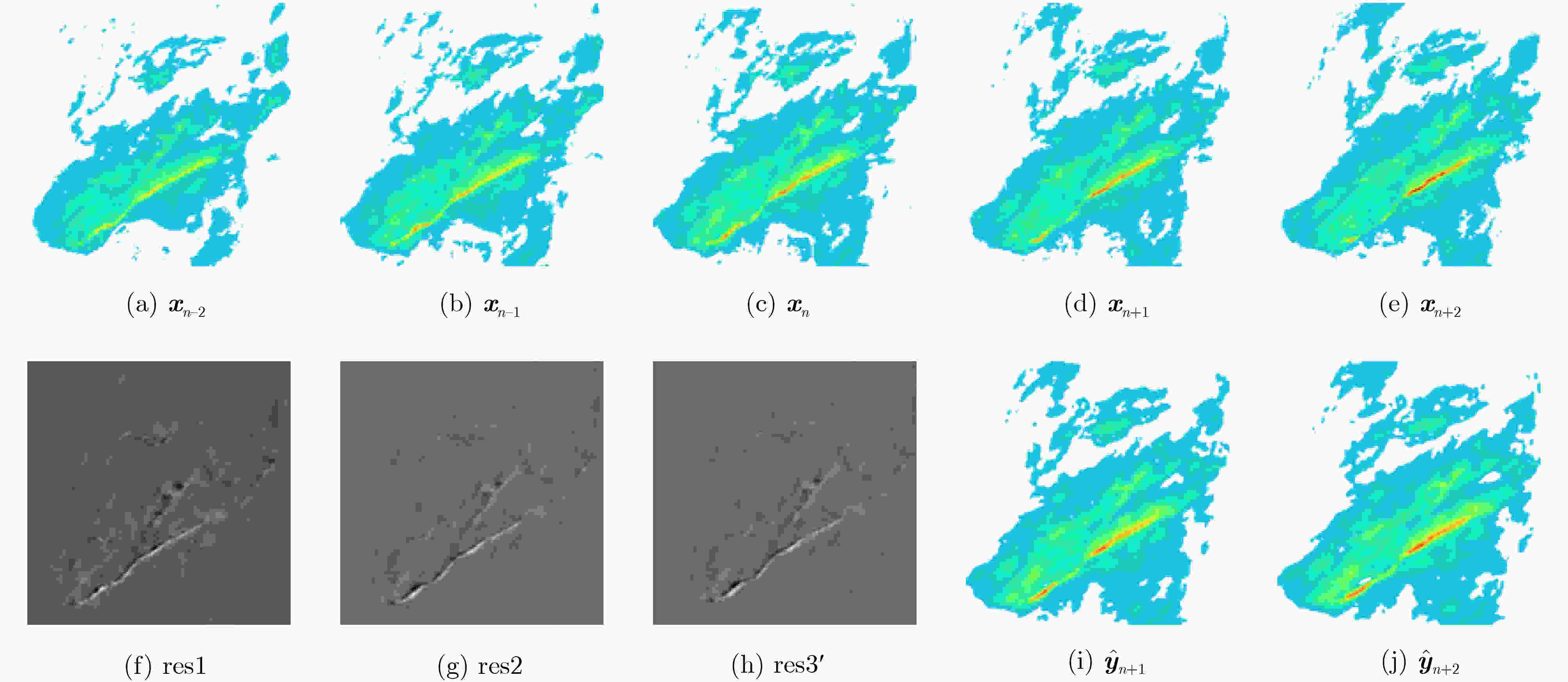
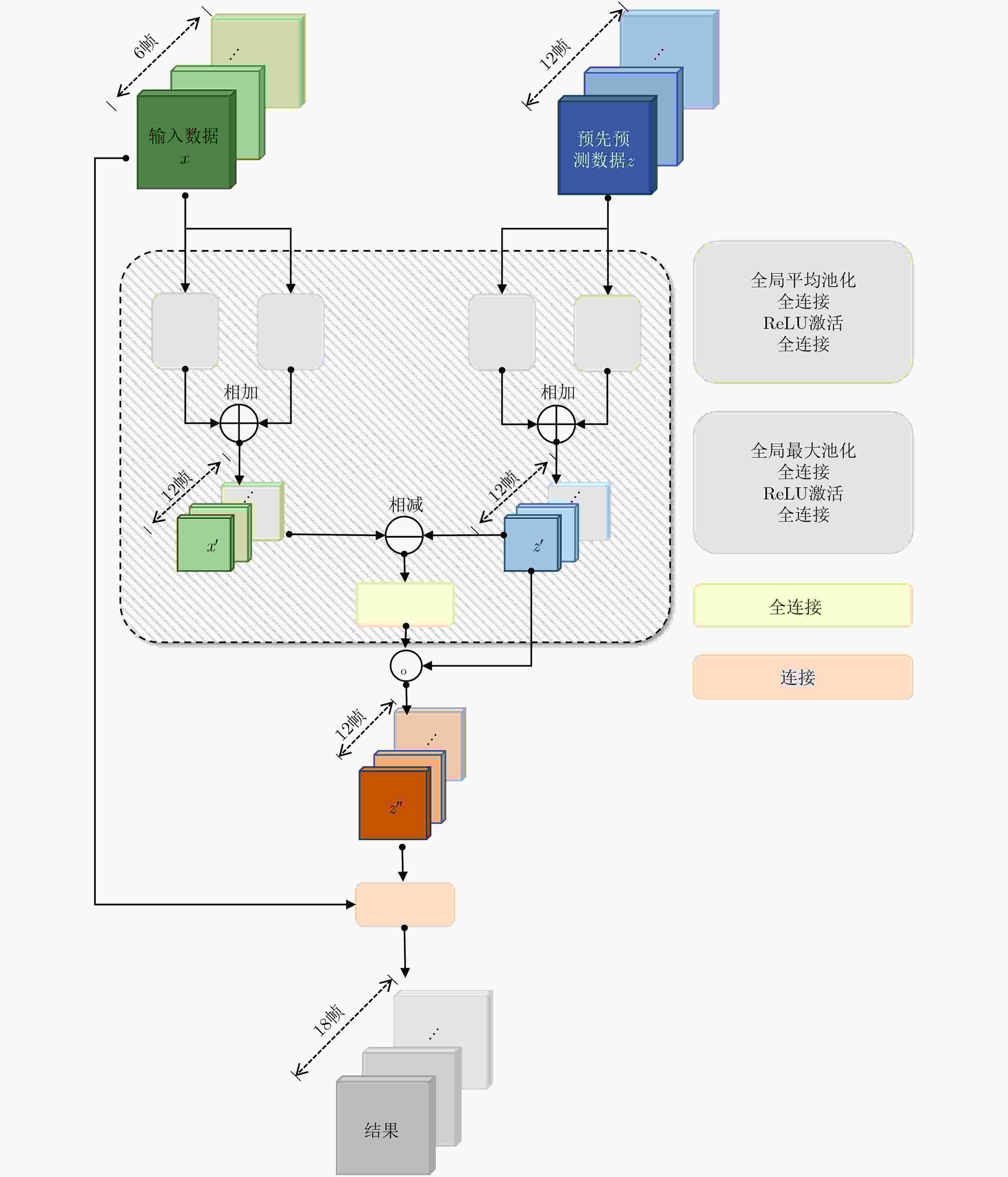
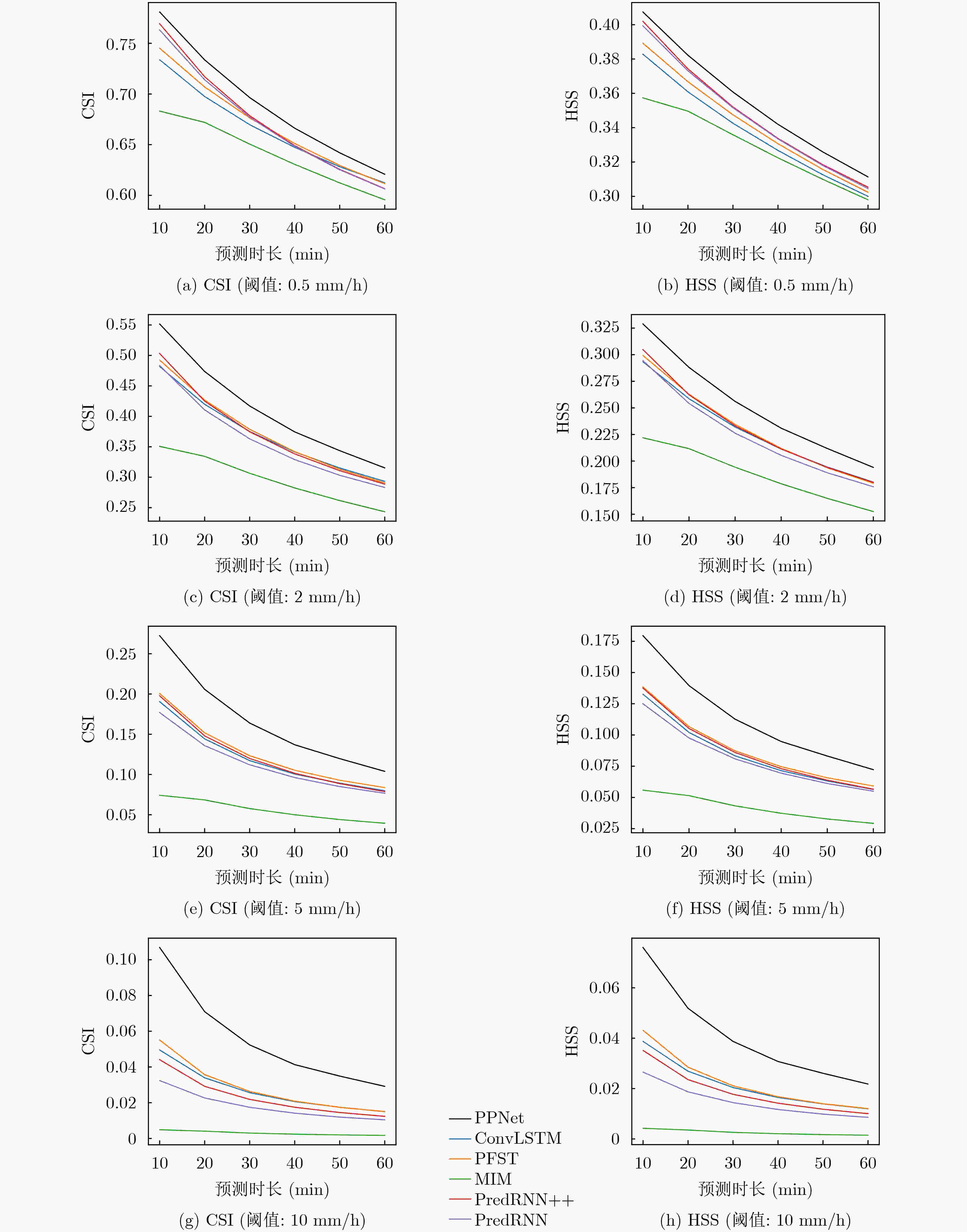
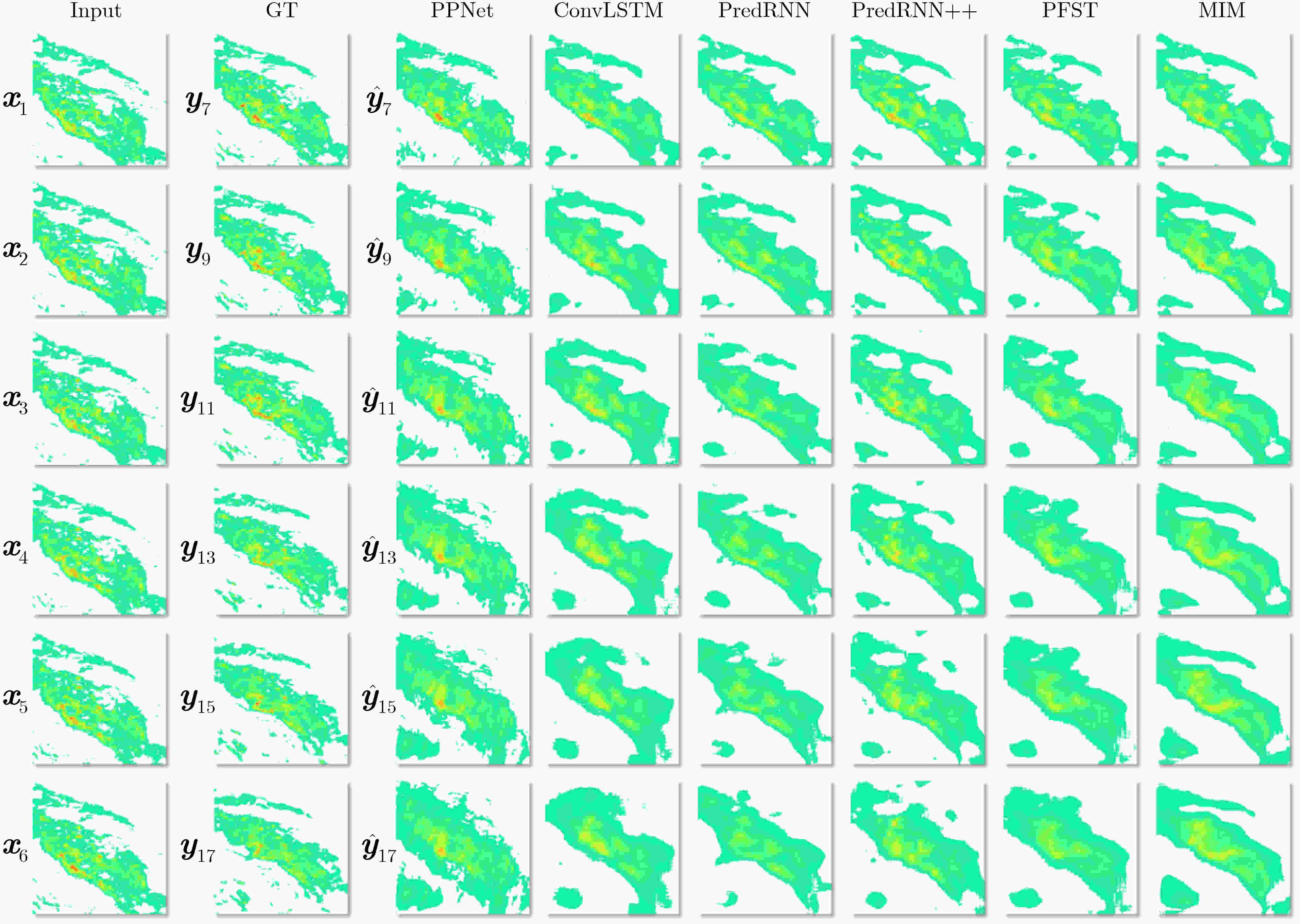


 下载:
下载:
